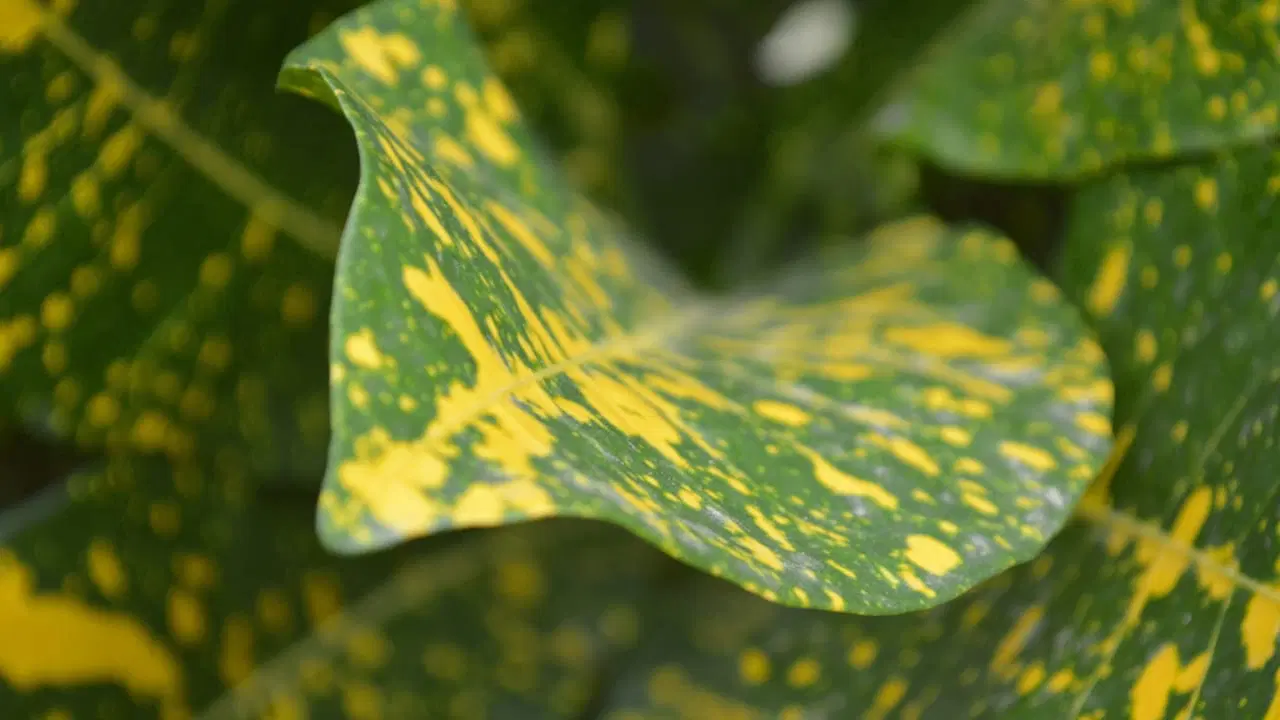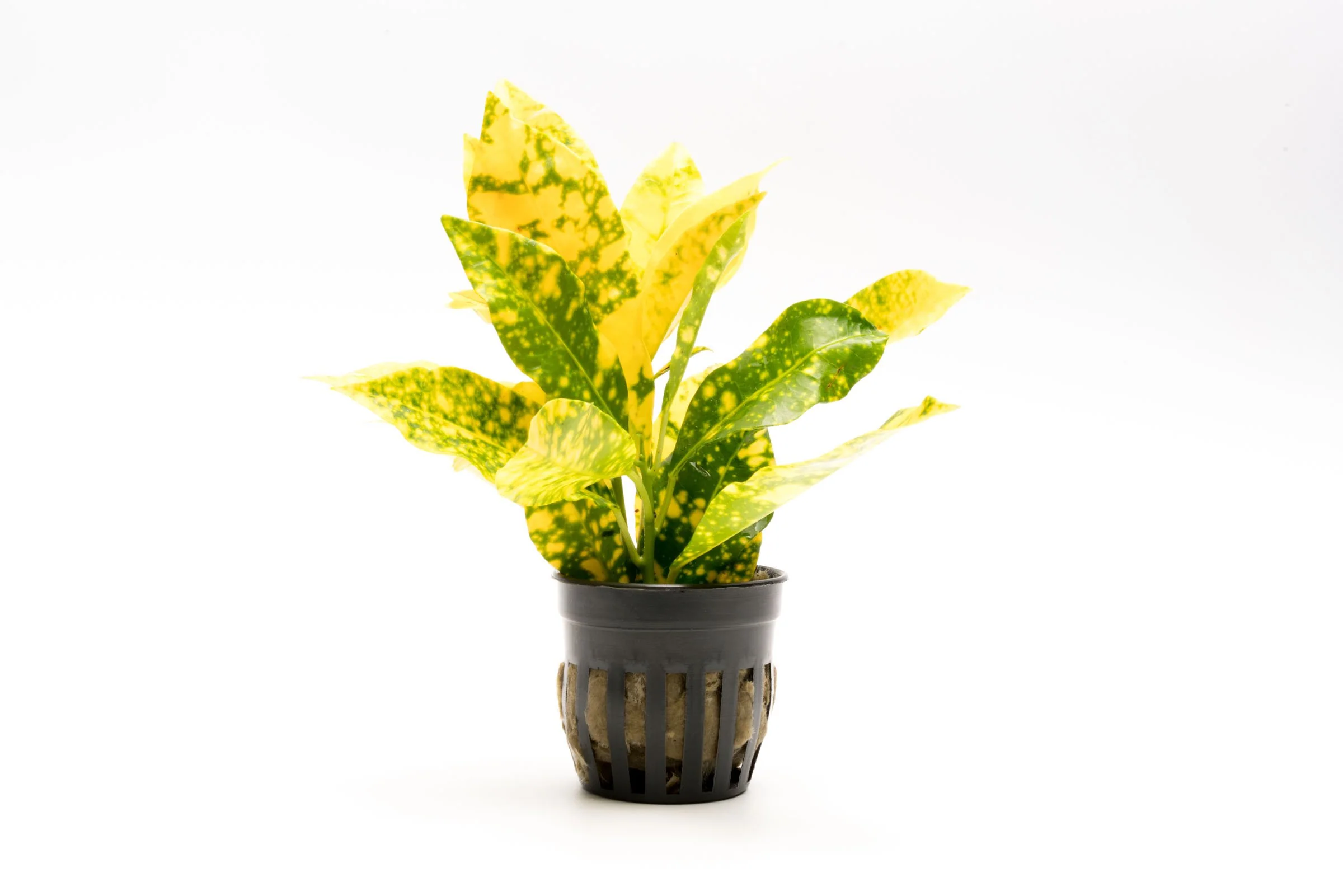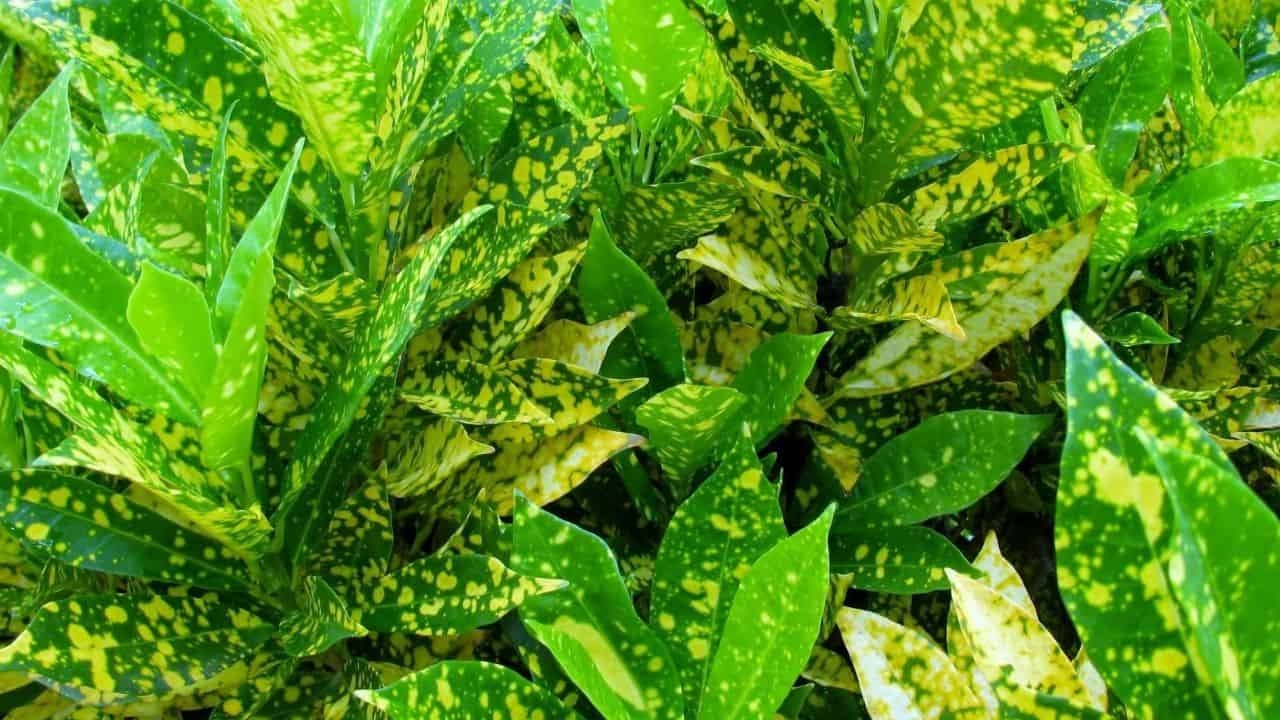HousePlantJoy is supported by our audience. When you purchase through one of our links, we may earn a small affiliate commission. As an Amazon Associate I earn from qualifying purchases. Your cost is not affected.
==================
The Gold Dust Croton is not just a plant; it’s a masterpiece of nature’s artistry, transforming ordinary spaces into dazzling displays of color and life. Imagine entering a garden where each leaf tells a vibrant story of gold, green, and speckled wonder. In this article, I’m excited to share my journey with you – from the initial awe to the intricate details of nurturing these plants. Join me as we delve into the captivating world of the Gold Dust Croton, exploring its vibrant appearance, unique care needs, and the myriad ways it can elevate your home or garden. Whether you’ve been gardening for years or are just starting to appreciate plants, the stories and tips here will captivate and motivate you. Keep reading to uncover the magic of this botanical gem!
Gold Dust Croton: Easy Tips for Vibrant Indoor Plants
The Gold Dust Croton is one of my favorite plants to grow because it adds a vibrant touch to any home or garden. Its bright green leaves, dotted with golden flecks, create a stunning display, making it stand out among other houseplants.
Gold Dust Croton plants require specific care to thrive, including proper light, water, and soil conditions. In my experience, these plants are beautiful and quite versatile. They always steal the show, whether you use them as potted patio plants or part of a tropical-themed hedge.
Learning to care for and propagate them is key to keeping them healthy and vibrant. Understanding the origins and basic needs of the Gold Dust Croton will help you maintain its beauty year-round. From light and water requirements to dealing with pests, I’ll walk you through everything you need to know.
Key Takeaways
- The Gold Dust Croton, Codiaeum variegatum, has an intriguing origin. It is native to Indonesia, Southern Asia, and the Pacific Islands.
- There’s a variety of Gold Dust Croton types, from ‘Excellente’ Croton to ‘Sunny Star’ Croton.
- Gold Dust Croton requires proper care in terms of light, water, temperature, fertilization, pruning, and soil.
- Propagating Gold Dust Croton can be achieved using stem cuttings, layering, and seed germination methods. Like many other plants, Gold Dust Crotons can face problems with pests and diseases.
My Experience
I first got my Gold Dust Croton from a local plant nursery a few years ago. It was just a tiny plant, about six inches tall. Since then, I’ve watched it grow to almost two feet. I’ve noticed that my Gold Dust Croton loves bright, indirect light. I place it near a window where it can get a few hours of sunlight each day.
For watering, I wait until the top inch of soil feels dry. I water it about every nine days, using a small cup to avoid overwatering. I keep the humidity around my plant at 40% to 60%. I use a pebble tray to increase the humidity when I can’t mist it daily.
Tracing Roots: The Origin and History of the Gold Dust Croton
The Gold Dust Croton, Codiaeum variegatum, has an interesting background. This colorful plant is part of the Euphorbiaceae family. It’s native to Indonesia, Southern Asia, and the Pacific Islands. The plant made its way to other parts of the world thanks to its vibrant leaves and easy-growing nature.
I discovered that the plant was first described by Carl Linnaeus in 1753. He named it due to its varied and striking leaf patterns. The plant’s popularity has grown, especially among ornamental plant lovers.
Not just limited to its native regions, the Gold Dust Croton now appears in many tropical gardens worldwide. It’s particularly valued in USDA grow zones 10-11, where it thrives outdoors. Indoors, it adds a splash of color to homes and greenhouses in many climates.
- ‘Excellente’ Croton: This variety has leaves that start green and gradually get spots of gold. Over time, the edges may turn red or orange, adding a warm touch to any space.
- ‘Petra’ Croton: ‘Petra’ is a popular type with broad leaves. These leaves have gold spots but also show shades of red, orange, and yellow. They make a colorful display.
- ‘Gold Sun’ Croton: As the name suggests, ‘Gold Sun’ is another bright variety. Its leaves are more elongated and show a golden-yellow pattern, which looks like sunlight filtering through.
Lighting Requirements
Gold Dust Croton does best in bright, indirect light for at least 4 hours daily. Direct sunlight can burn the leaves, which makes them lose their vibrant color. You may notice a slow growth rate if your plant needs more light. Place it near a window where it gets filtered sunlight. Artificial grow lights can also supplement natural light, especially during winter months.
Watering Schedule
I water my Gold Dust Croton when the top inch of the soil feels dry. You want to avoid overwatering because it can lead to root rot. Using a watering can with a narrow spout is super helpful when you’re watering. It helps you aim the water right at the base of the plant so you’re not accidentally soaking the leaves.
Temperature and Humidity Control
Gold Dust Croton prefers temperatures between 60°F and 85°F (15°C – 29°C). It doesn’t tolerate cold drafts well, so keep it away from windows and doors during winter. Make sure the humidity levels are at least 40%. If your home tends to be dry, use a humidifier or place the plant on a pebble tray with water in it.
Stem Cuttings
The most common way to propagate Gold Dust Croton is using stem cuttings. You’ll need a healthy, mature stem about 4 to 6 inches long with several nodes.
First, use clean, sharp pruning shears or a knife to cut the stem below a node. Removing the leaves below the cut and leaving 3 to 4 leaves at the top helps the cutting focus on rooting rather than supporting foliage.
After cutting the stem, dipping the end into rooting hormone helps it grow roots faster. After you’ve prepared the cutting, just pop it into a pot with some well-draining soil. You’ll want to keep the soil moist, but make sure it’s not overly wet. Covering the pot with a plastic bag keeps the humidity high, which is important for the cutting to root successfully.
Layering
Another method to propagate Gold Dust Croton is layering specifically air layering. This involves choosing a healthy branch and making a small cut on it.
Wrap some damp sphagnum moss around the cut area and then cover it with plastic wrap to keep it nice and moist. Secure both ends with ties or string. Over time, roots will form in the moss.
Once a substantial root system has developed, you can cut the new plant below the root ball and plant it in the soil. This method often has a higher success rate because the new plant gets nutrients from the parent plant while forming roots.
Seed Germination
Propagation through seed germination is possible, though less common and more time-consuming. Gold Dust Croton seeds need to be fresh for the best chances of germination. Plant the seeds in a pot with a soil mix that drains well. Just cover them lightly with soil and water them gently. Remember to keep the soil consistently moist for germination to happen.
Put the pot in a warm, bright area, but avoid direct sunlight. It can take several weeks to a few months for the seeds to germinate. Once the seedlings are sturdy enough, you can transplant them into their pots. Growing new Gold Dust Croton plants from seeds requires patience and care, though many people prefer quicker methods like stem cuttings or layering.
Common Pests
Gold Dust Crotons can sometimes have pest problems, like mealybugs and scale insects. These pests can slow down leaf growth and make your plant look sick.
Mealybugs are white, fluffy, and scale insects that look like tiny brown bumps on the leaves. You might also spot spider mites, which cause small yellow or brown spots on the leaves.
If you ignore these pests, they can hurt your plant. It’s good to check your plant often to catch these pests early. You can also gently wipe the leaves with a damp cloth to keep them clean and dust-free.
Disease Prevention
Preventing diseases in your Gold Dust Croton involves proper watering, sunlight, and soil conditions. Overwatering is a big issue because it can lead to root rot, which often happens with this plant. Ensure the soil is well-draining and that only water is available when the top inch of soil is dry.
Powdery mildew is another common problem. It appears as a white, powdery layer on the leaves. This condition thrives in humid environments. To prevent it, ensure your Croton has good air circulation and isn’t crowded by other plants.
Using organic mulch around the stem helps to keep the soil moist and cool, which promotes healthy root growth. Always check for early signs of disease and pests to address issues promptly.
Indoor Decorating
I love using the Gold Dust Croton as a statement piece in my home. Its bright leaves stand out in any room. I prefer keeping it near a window where it gets bright, indirect light. This keeps its colors vibrant.
For a dynamic look, I mix it with neutral decor. The green and gold leaves pop against white or beige walls. Placing it in decorative pots enhances its beauty. I also like to use it in living rooms and hallways.
On top of looking great, the Gold Dust Croton also helps improve indoor air quality. Incorporating it in my home office gives the workspace a fresh, lively feel. Remember to mist it regularly to maintain humidity.
Companion Plants
In my experience, the Gold Dust Croton pairs well with various plants. I often place it next to peace lilies and spider plants for indoor settings. These companions appreciate similar light and humidity conditions.
In the garden, I like to group it with other tropical plants like hibiscus and birds of paradise. These plants share similar care needs, making maintenance easier. They also create a lush, exotic look.
I also use it alongside ferns and hostas in shaded areas. The contrast between the Gold Dust Croton’s bright foliage and the green of the ferns is visually striking. Mixing textures and colors can make any space more engaging.
Cultivating Vibrant Beauty with the Gold Dust Croton
Gold Dust Croton is a plant that beautifies its surroundings and captivates with its vibrant colors and unique foliage patterns. It has been a pleasure sharing my journey and insights into this remarkable plant, from its origins and history to practical tips on care and propagation.
You can ensure that your Gold Dust Croton thrives year-round by understanding its specific needs regarding light, water, soil, and humidity, as well as proper propagation techniques and knowing how to manage pests and diseases.
Exploring its various varieties with distinct characteristics adds to the joy of cultivating this botanical gem. From the ‘Excellente’ with its red-tinged edges to the ‘Sunny Star’ with its narrow, speckled leaves, a variety suits every taste and style.
Incorporating the Gold Dust Croton into your living space enhances its aesthetic appeal and contributes to a healthier indoor environment. Its air-purifying qualities and low-maintenance nature make it an ideal choice for bringing nature indoors.
I hope this article has inspired you to explore the magic of the Gold Dust Croton and consider adding it to your collection. This plant will bring you years of joy and beauty with its stunning looks and easy care. Happy gardening!
Can Gold Dust Crotons Be Grown Outdoors?
What Are the Ideal Light Conditions for a Gold Dust Croton?
Is the Gold Dust Croton Harmful to Pets, Like Dogs?
Why Should You Join Us?
Get insider secrets: Unearth the best-kept tips to keep your plants thriving and blooming like never before.
Expert Advice: Gain access to our team on Facebook, Twitter, and other social media channels, and meet our gardening experts eager to help you on your plant journey.
Engage With Like-Minded Souls: Connect with fellow plant lovers, exchange stories, and build a supportive community. Join us today! Follow Houseplant Joy on Facebook, Instagram, and Twitter for daily inspiration and a blooming good time! #HouseplantJoy #GreenThumbsUnite #HouseplantLove













